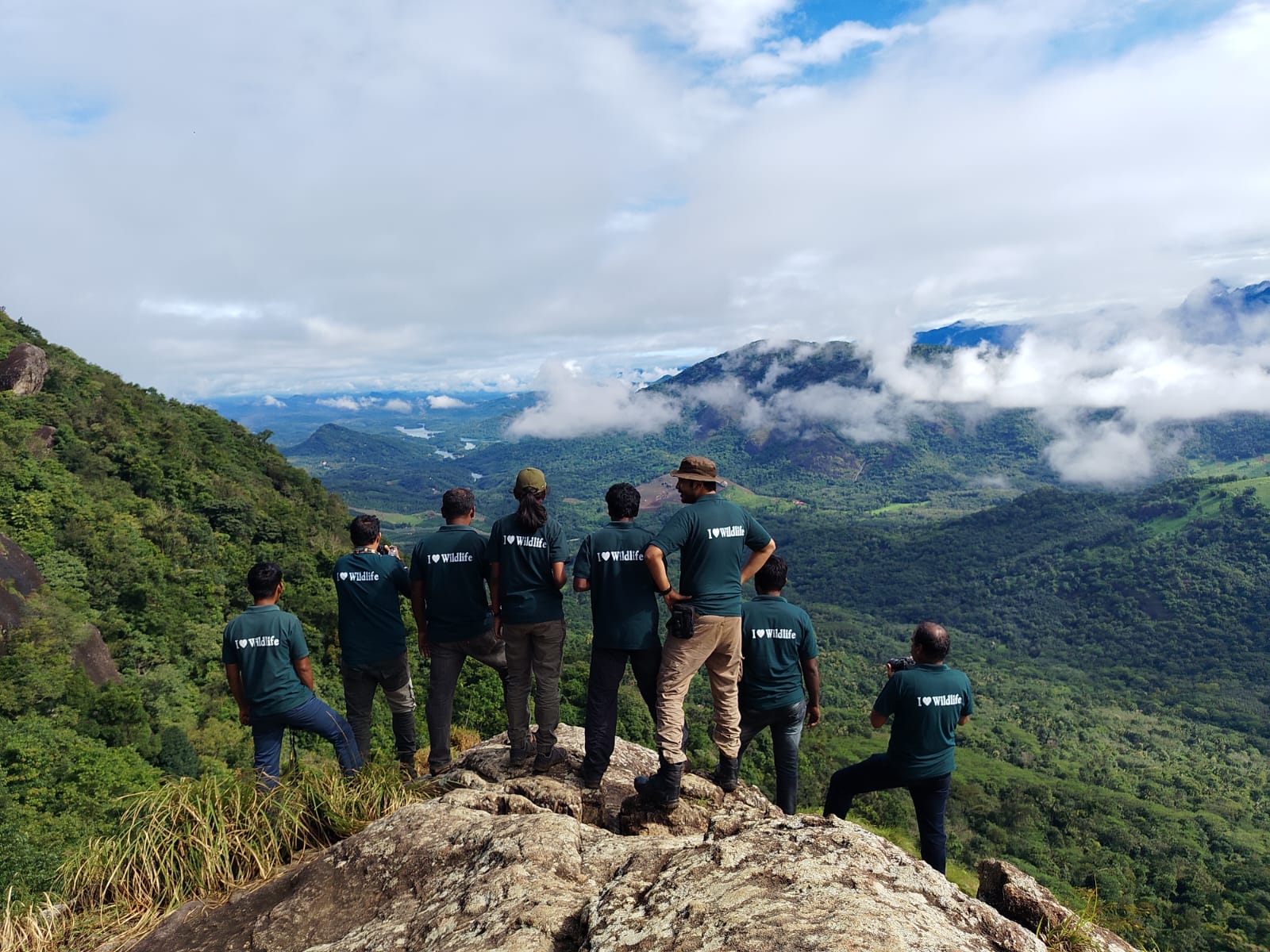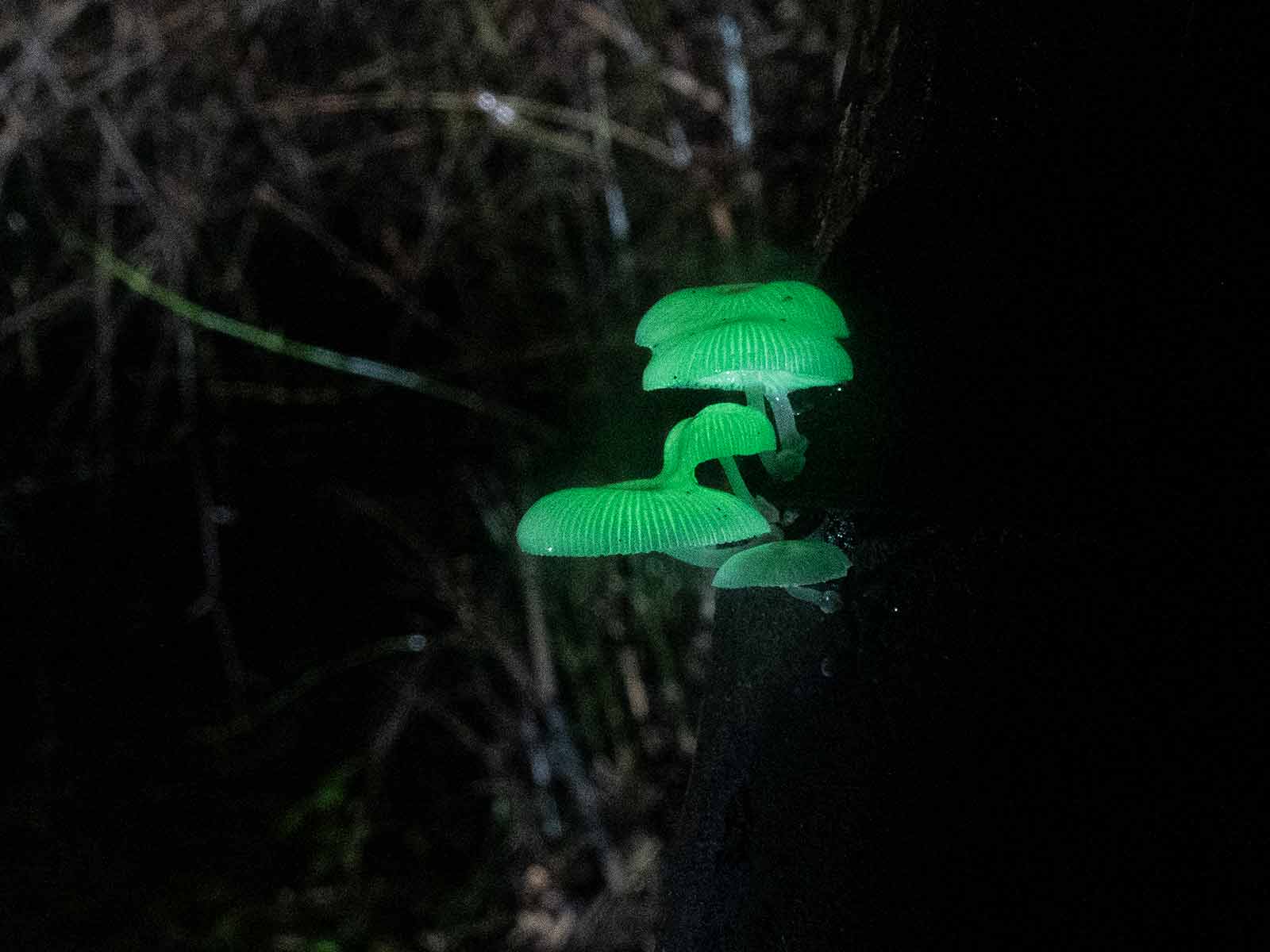During a monsoon expedition within the protected area of Kanyakumari Wildlife Sanctuary (KKWLS) of Tamil Nadu a team of researchers along with the forest department staff encountered the breathtaking spectacle of the bioluminescence. Upon inquiry, both the forest department personnel and the local tribal communities, these indigenous sources of knowledge, confirmed the presence of such bioluminescent mushrooms. Informed by these valuable insights, the research team embarked on this expedition with the hope of witnessing this extraordinary natural phenomenon. The team along with the Forest Department staff observed a congregation of extremely rare bioluminescent mushroom in the Kulasekharam forest range of KKWLS. This is the first photographic and scientific record of bioluminescent fungi – Mycena chlorophos from Tamil Nadu.

Vinod Sadhasivan, Director of Kanniyakumari Nature Foundation who was part of this expedition says “This is truly a remarkable finding and this is another proof of the richness of biodiversity inside Kanyakumari Wildlife Sanctuary”.
Mycena chloropos
Bioluminescence is the ability of living organisms to emit light. Bioluminescence occurs due to a biochemical reaction between luciferins, oxygen and the enzyme luciferase. Mushrooms belong to the kingdom Fungi and there are around 103 species of bioluminescent fungi in the world of which 7 are found in India. The bioluminescent mushroom spotted in Kanyakumari was identified as Mycena chlorophos. It is characterized by a pristine white disc with a shallow depression in the center and emits a bright, greenish light in the dark. The benefits of bioluminescence in fungi is to attract insects for facilitating their spore dispersal.

Jude , an enthusiastic wildlife cinematographer who was also part of the expedition , mentions that the bioluminescent fungi should have been throughout Western Ghats. Now with the habitat destruction, they are seen only in a few isolated patches where there is minimal human disturbance. Also with light pollution we have lost our ability to admire these whimsical natural wonders.

The District Forest Officer and Wildlife Warden, Mr.M.Ilayaraja says “I’m genuinely amazed and deeply touched by the beauty and importance of this discovery. The presence of bioluminescent fungi highlights how crucial it is to protect places like Kanyakumari Wildlife Sanctuary. However, it’s also a reminder of the challenges we face, including habitat destruction, climate change, and light pollution, which threaten these remarkable organisms and our fragile environment. As forest officials, we are determined to double our efforts in conservation and safeguarding the sanctuary and its unique inhabitants. This extraordinary find inspires us to strengthen our commitment to protection. Our goal is to ensure that the entire spectrum of biodiversity within Kanyakumari Wildlife Sanctuary thrives for generations to come”.

